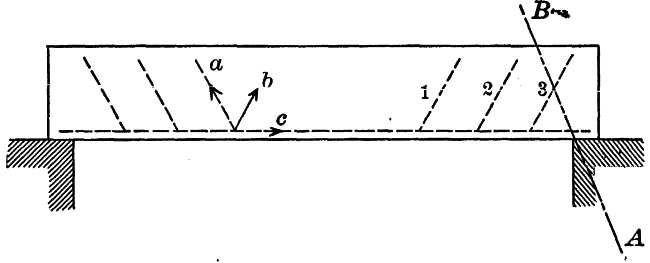AMERICAN SOCIETY OF CIVIL ENGINEERS
INSTITUTED 1852
TRANSACTIONS
Paper No. 1169
SOME MOOTED QUESTIONS IN REINFORCED CONCRETE DESIGN.[A]
By Edward Godfrey, M. Am. Soc. C. E.
With Discussion by Messrs. Joseph Wright, S. Bent Russell, J.R.Worcester, L.J. Mensch, Walter W. Clifford, J.C. Meem, George H. Myers,Edwin Thacher, C.A.P. Turner, Paul Chapman, E.P. Goodrich, Albin H.Beyer, John C. Ostrup, Harry F. Porter, John Stephen Sewell, Sanford E.Thompson, and Edward Godfrey.
Not many years ago physicians had certain rules and practices by whichthey were guided as to when and where to bleed a patient in order torelieve or cure him. What of those rules and practices to-day? If theywere logical, why have they been abandoned?
It is the purpose of this paper to show that reinforced concreteengineers have certain rules and practices which are no more logicalthan those governing the blood-letting of former days. If the writerfails in this, by reason of the more weighty arguments on the other sideof the questions he propounds, he will at least have brought out goodreasons which will stand the test of logic for the rules and practiceswhich he proposes to condemn, and which, at the present time, are quitelacking in the voluminous literature on this comparatively new subject.
Destructive criticism has recently been decried in an editorial in anengineering journal. Some kinds of destructive criticism are of thehighest benefit; when it succeeds in destroying error, it isreconstructive. No reform was ever accomplished without it, and no[Pg 55]reformer ever existed who was not a destructive critic. If showing uperrors and faults is destructive criticism, we cannot have too much ofit; in fact, we cannot advance without it. If engineering practice is tobe purged of its inconsistencies and absurdities, it will never be doneby dwelling on its excellencies.
Reinforced concrete engineering has fairly leaped into prominence andapparently into full growth, but it still wears some of itsswaddling-bands. Some of the garments which it borrowed from sisterforms of construction in its short infancy still cling to it, and, whilethese were, perhaps, the best makeshifts under the circumstances, theyfit badly and should be discarded. It is some of these misfits andabsurdities which the writer would like to bring prominently before theEngineering Profession.
The first point to which attention is called, is illustrated in Fig. 1.It concerns sharp bends in reinforcing rods in concrete. Fig. 1 shows areinforced concrete design, one held out, in nearly all books on thesubject, as a model. The reinforcing rod is bent up at a sharp angle,and then may or may not be bent again and run parallel with the top ofthe beam. At the bend is a condition which resembles that of a hog-chainor truss-rod around a queen-post. The reinforcing rod is the hog-chainor the truss-rod. Where is the queen-post? Suppose this rod has asection of 1 sq. in. and an inclination of 60° with the horizontal, andthat its unit stress is 16,000 lb. per sq. in. The forces, a and b,are t
